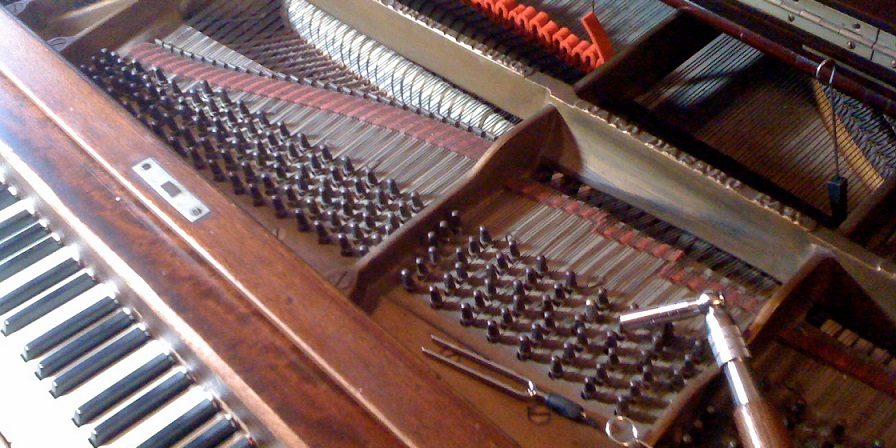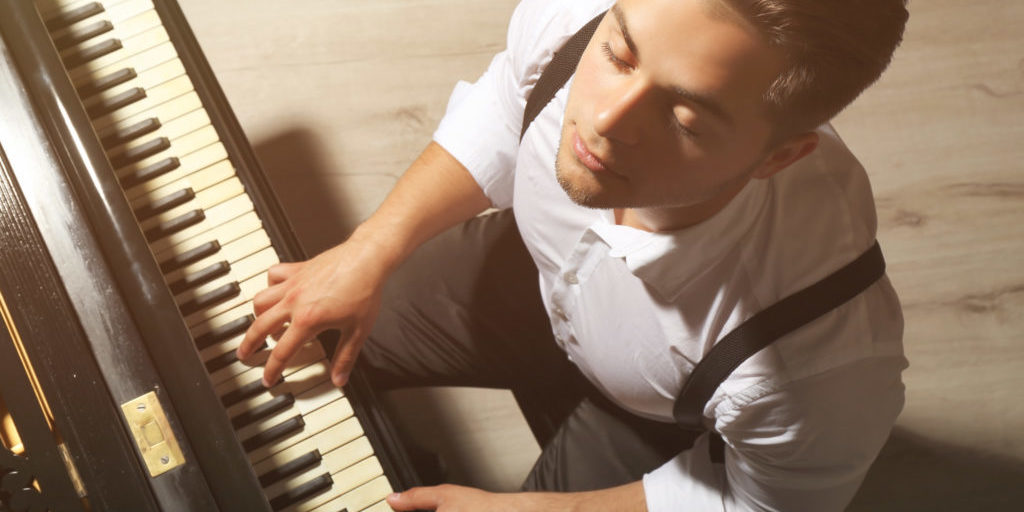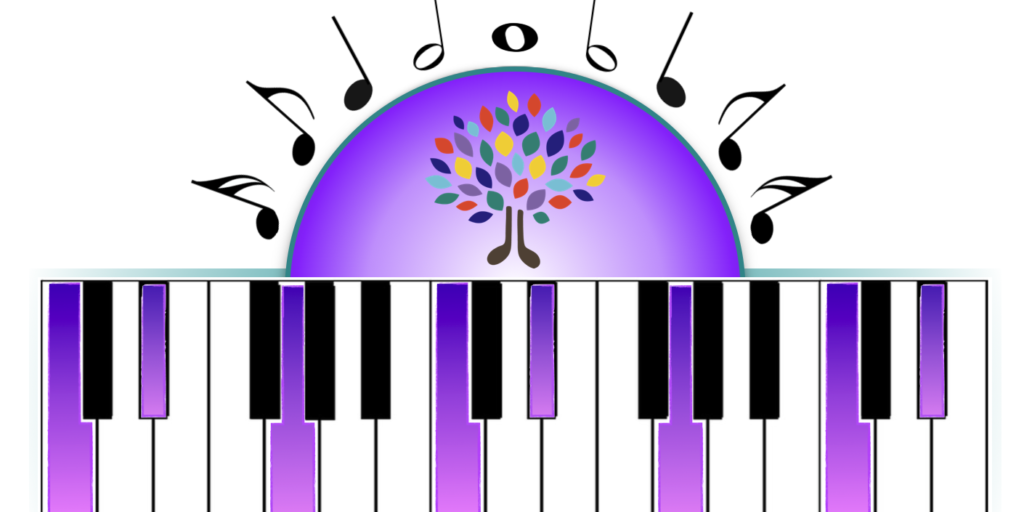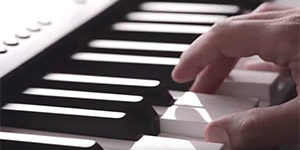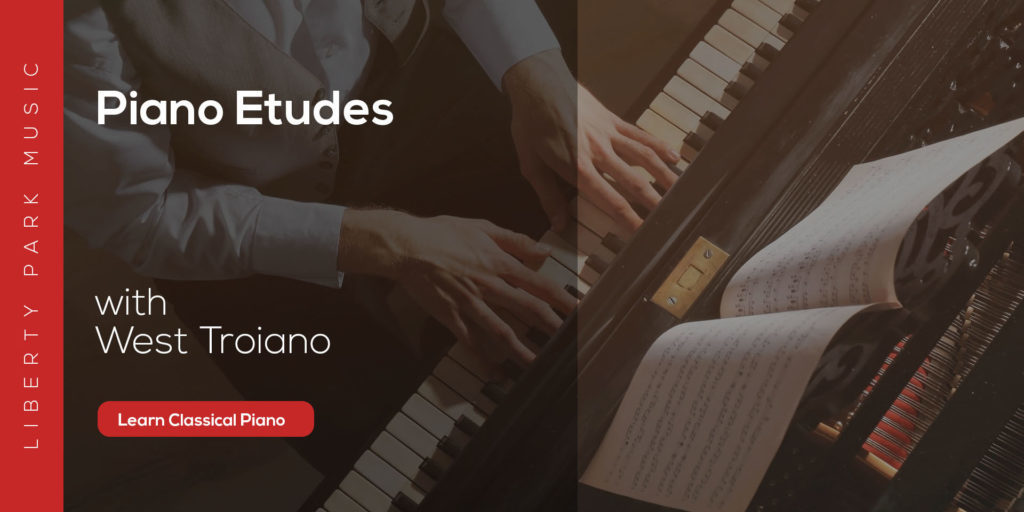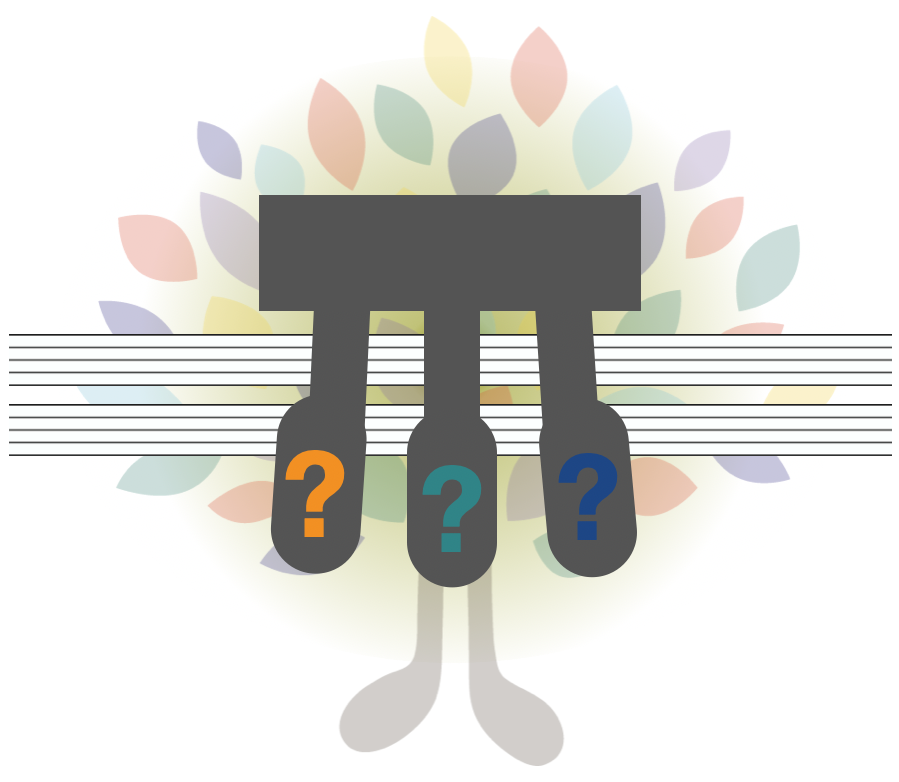
“The pedal is the soul of the piano,” said the famed 19th century pianist Anton Rubinstein.
But wait, which pedal? Aren’t there three of them?
In this article we’ll provide an overview of the piano pedals: we’ll tell you what they are, how they work, and briefly explain how they are used.
The Sustain Pedal
How the Sustain Pedal Works
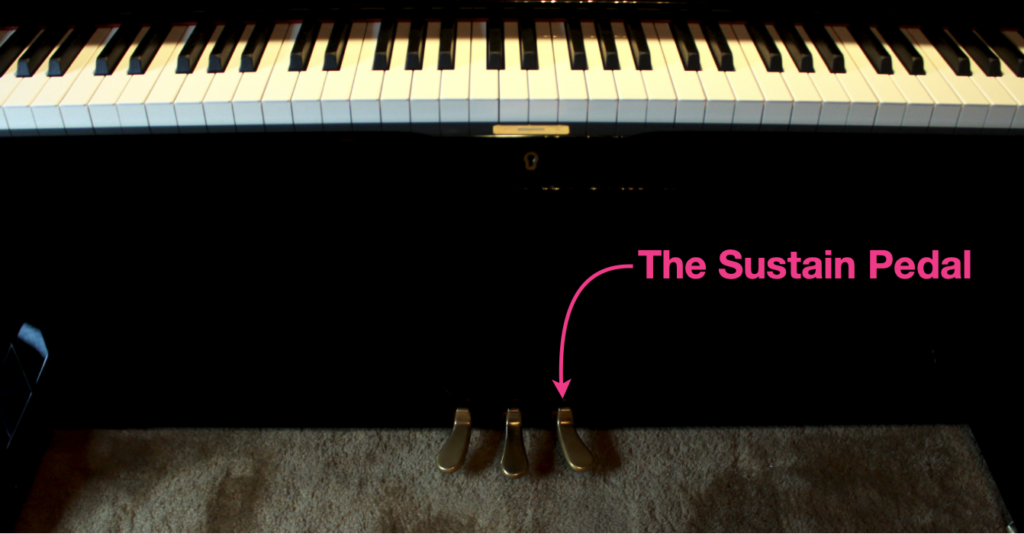
The sustain pedal (also called the damper pedal), is the rightmost pedal when facing the keyboard. Whenever you hear someone talk about using “pedal,” this is the pedal they’re referring to (including Mr. Rubinstein in his quote from above).
The piano has around 230 strings of varying lengths, and a part of the mechanism of the piano is that these strings are “dampened,” or muted, unless a key is being held down. This is done with felt pads that sit on the strings, called dampers, that raise up when a key is pressed so that the strings associated with that key can ring out.
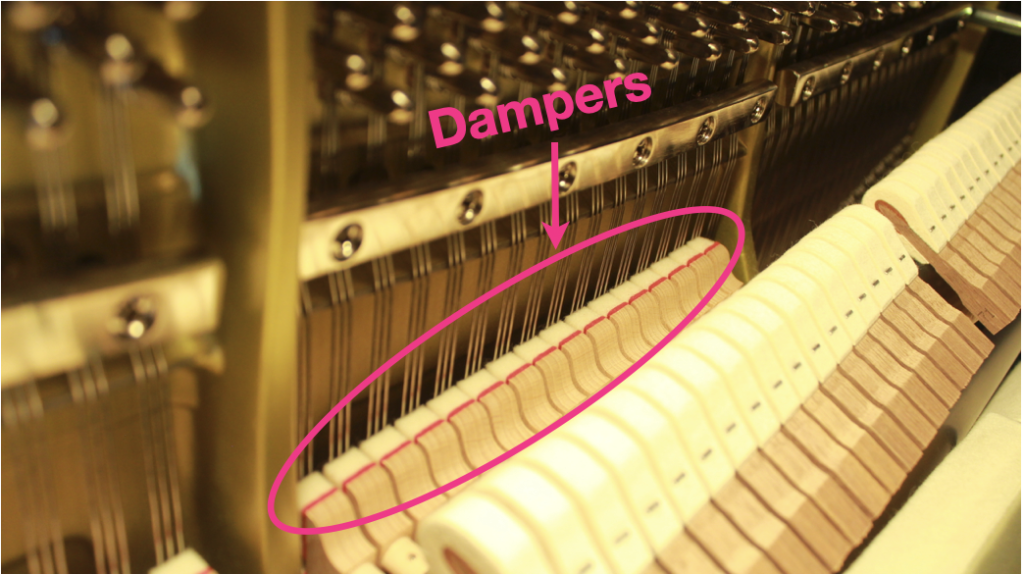
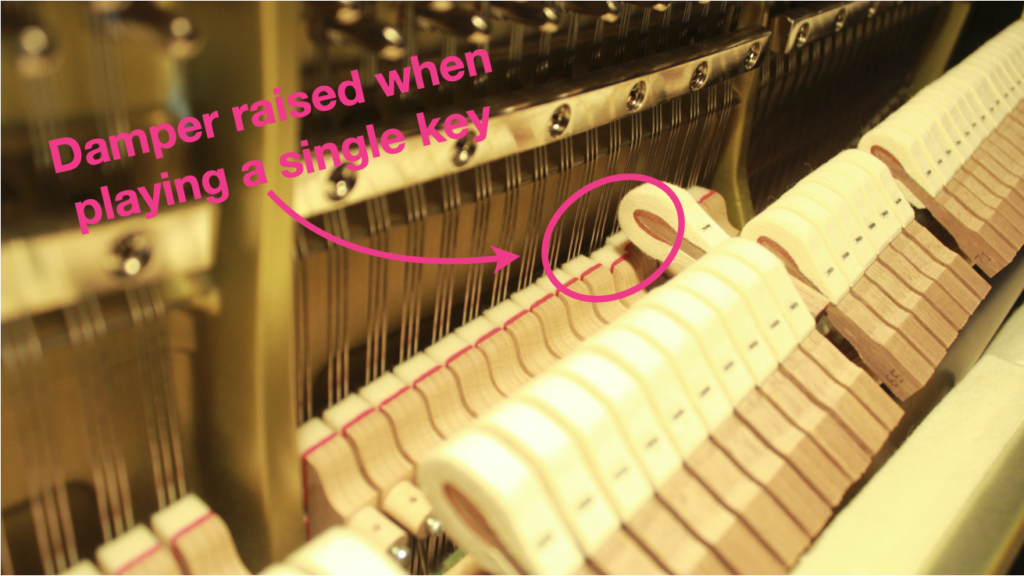
The sustain pedal allows the performer to lift all of the dampers off the strings, letting the entire instrument resonate, and allowing notes and harmonies to be blended more freely.
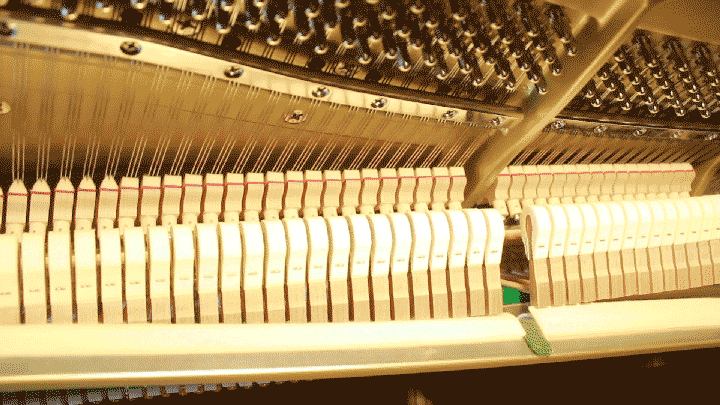
Using the Sustain Pedal
While the sustain pedal developed over time, and was not considered a foundation of piano performance until the Late Classical and Early Romantic periods, using the sustain pedal in modern piano performance is extremely common in a vast array of piano music styles. Relatively little piano music is stylistically intended to be played without it, and most performers will assume it is meant to be used unless there are specific instructions in the music telling them not to use it, or if they know it is not stylistically appropriate (such as when playing Baroque keyboard music).
To use the sustain pedal, the performer sits with their heel on the ground, and depresses the pedal with their foot and toe:
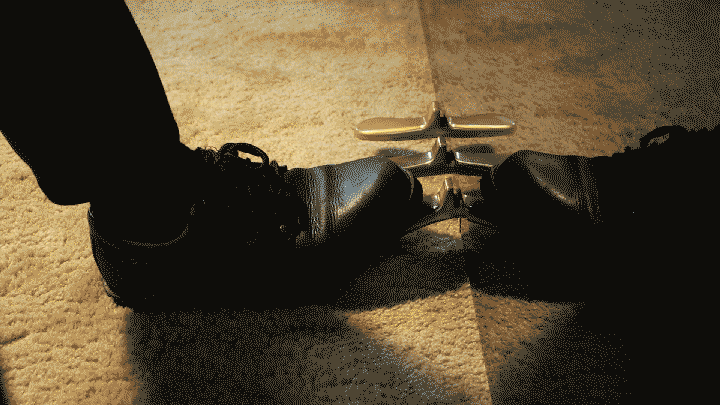
While there are many techniques surrounding the use of the pedal, the most basic technique involves lifting and quickly re-pressing the pedal on changes of harmony. The goal is to “release” the sound of the previous notes, and “catch” the sound of the new notes, without creating a muddy sound by accidentally blending the two.
Here are two audio examples of the pedal in use.
In the first, the passage is played with the pedal completely depressed the entire time. Take note of how the harmonies at the beginning blend together freely, creating a muddy and less distinct sound:
In the second example, the same passage is played, but now with the pedal lifted and re-pressed on each harmony change. Note how the sound is clearer, and how the individual harmonies are easier to hear:
On digital keyboards the pedal works like a button, simulating a completely depressed pedal, and synthesizing the sustained sound.
On real pianos (especially high quality ones), the sustain pedal can control the dampers such that they just barely touch (or graze) the strings, allowing different levels of muting and sustaining. Advanced music and skilled performers will use more subtle pedal techniques to achieve greater depths of expressivity and interpretation.
The Sustain Pedal in Music Notation
There are a number of different ways to mark the use of the sustain pedal in music notation. They look somewhat different from one another, but they all function the same way, indicating where the pedal should be depressed, and where it should be lifted.
Here are some of the most common ways you’ll see the sustain pedal marked in music notation.
The first example below shows a classic, abbreviated, "ped," followed by a straight line indicating the length of the pedal hold. The small triangles instruct that the pedal should be quickly lifted and pressed again:

Sometimes only a bracket is used instead of the abbreviated "ped":

An older style of pedal marking used the abbreviated "ped" with no line, but with a special, circular symbol that indicates that the pedal should be lifted.:

The Soft Pedal
How the Soft Pedal Works
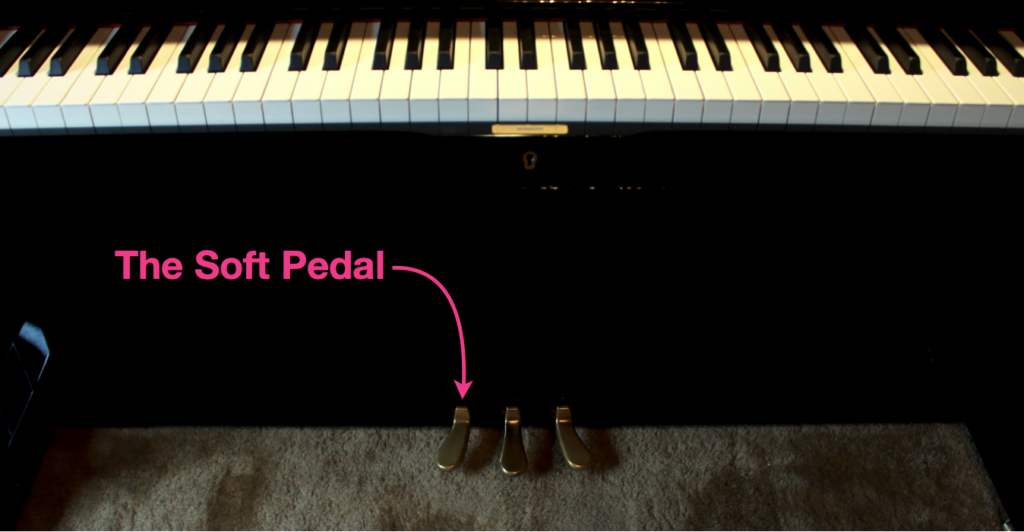
The soft pedal (also called the una corda pedal), is the leftmost pedal when facing the keyboard.
As you might imagine, the effect of using the soft pedal is to lower the volume of the instrument. However, the pedal mechanism is different between grand and upright pianos, and, consequently, so are the exact effects.
On an upright piano, the soft pedal bumps the hammers closer to the strings, giving them less space to build up kinetic energy, and softening their impact:
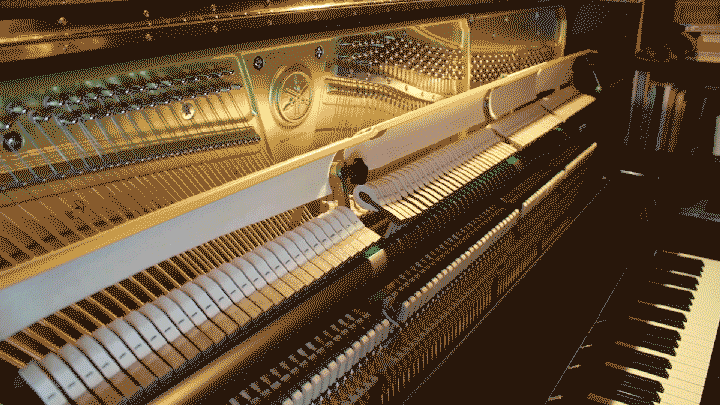
On a grand piano, the soft pedal shifts the entire action (the keyboard and the hammers) slightly to the side, so that most of the hammers only strike two of the three strings they normally would. This not only softens the sound, but also changes the tone quality, as the hammers (in addition to striking less strings) are also striking with different parts of their felt pads, which are usually less used, and therefore softer.
Using the Soft Pedal
It is a common misconception that the soft pedal is meant to be used to soften the sound when practicing, to minimize the disturbance caused by the sound of the piano. This is rarely effective, regularly results in overuse of the soft pedal, and also results in players who are uncomfortable playing without it.
Rather, than considering it a practice aid, the soft pedal has some context-specific values that are more important.
On an upright piano, using the soft pedal can provide a slightly lighter “touch” to the keys, which some performers enjoy. Additionally, the softer sound it provides can also be pleasing to use in gentle pieces, or gentle moments in larger pieces where the performer can use it to contribute to the expressive nuance.
On a grand piano, using the soft pedal does not alter the touch of the keys, but it does soften and slightly alter the character of the sound. Because of this, it is important for pianists playing grand pianos to only use the soft pedal in musical contexts that are appropriate.
The Soft Pedal in Music Notation
The use of the soft pedal is often a choice of the performer, but it can be notated in music similarly to the way the sustain pedal is notated, with indications as to when it should be depressed and released.
The Sostenuto/Mute Pedal
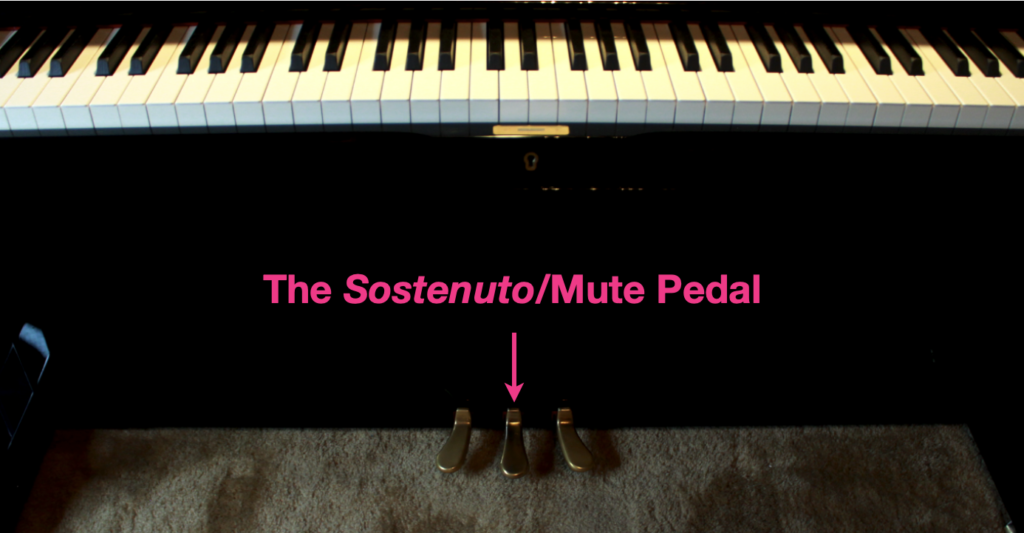
The Sostenuto Pedal
The middle pedal on a piano can have a number of different functions. Most commonly, it functions with a variation on damper manipulation, and is called the sostenuto pedal.
The sostenuto pedal sustains only the keys that are already down when it is pressed, leaving all of the other dampers down, so that any notes not under the effect of it will play normally.
For example, if a player holds the notes of a C major chord, and then presses the sostenuto pedal, only the notes of that chord will sustain. This allows the performer to play the other notes with different articulations.
Check out this demonstration of the sostenuto pedal from the author:
The sostenuto pedal is rarely used in most piano literature and performance. It is occasionally called for in more modern pieces of piano literature, or when improvising.
Notation for using the sostenuto pedal is typically the word sostenuto, or sost. with an indication to press or lift.
The Mute Pedal
Another common iteration of the middle piano pedal is the mute pedal.
The mute pedal, when depressed, drops a piece of felt (known as a practice rail) between the strings and the hammers, effectively removing a great deal of the volume and brightness from the piano sound.
Unlike the soft pedal, the predominant function of the mute pedal is to minimize the piano sound for the purpose of practicing. The mute pedal is almost exclusively found on upright pianos, and it is often constructed with a lock feature so that the player does not need to hold it with their foot.
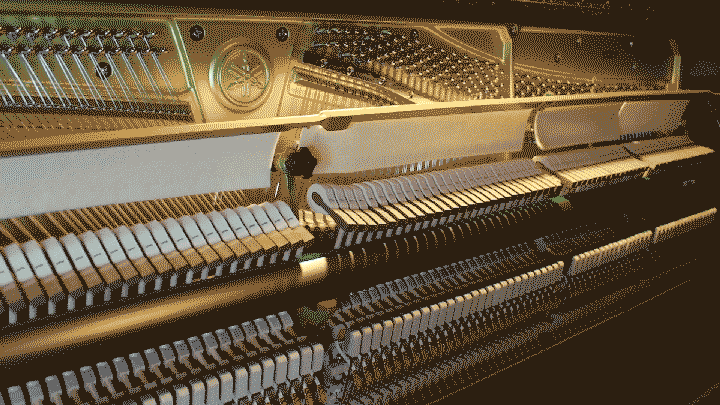
Thanks for checking out this article from Liberty Park Music! If you liked what you saw here, you can find more in our blog at libertyparkmusic.com. We also have a YouTube page! And if you're really ready to take your music training to the next level you can subscribe to our site and gain access to a full spectrum of piano, guitar, drum, and music theory lessons.
Sign up for our free newsletter
Useful articles for musicians
About the Author: West Troiano
West has over 10 years of teaching experience in settings that vary from private studios to college classrooms. In addition to teaching through traditional forms of piano pedagogy, West frequently produces music and teaching materials that cater to the needs of his students. Check out West's course on Piano Etudes for both beginners and intermediate pianists.


